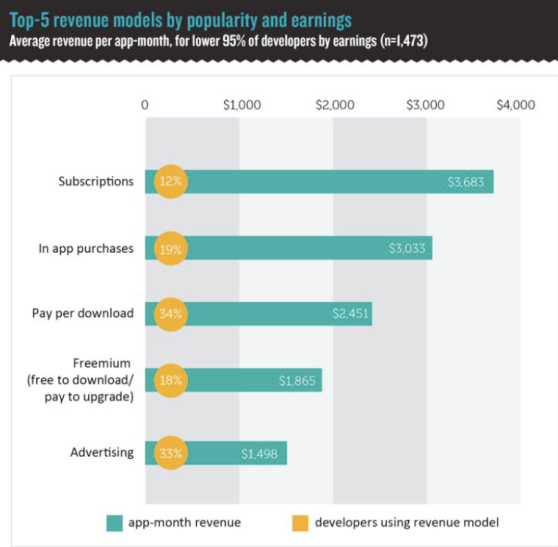On a birthday-party of one of my old friends I had a great conversation with John about his latest project: He and his friends are about to develop an application that should help people to reach their personal goals. Very interesting, sounds great! But already on that evening I started to wonder if is profitable to develop an app and if you can really earn a lot of money in this business?
Apple generates daily revenue of $250,000 to $300,000 only from apps!
To answer this question we have to look what experts of this field say. Lets check out the potential of the market: “According to Gartner, in 2011 global sales of apps accounted for $15 billion and is expected to reach 52 billion in 2015“ Kim May Cutlers, editor at techcrunch.com says that Apple generates daily revenue of $250,000 to $300,000 only from apps! CHECK! We defiantly have a lot of potential here!
You may have another app that might be of interest to the customer.
But if we belief JOHN MANOOGIAN III, an editor on techcrunch.com there are only two safe ways to generate money with applications: “Users or Advertisers?“ If you bring your app into the app store you can either charge money or you can give away for free and make money with advertisement. Furthermore 30% of application revenues go to apple respectively to the shop provider. Even Gartner estimates that “more than 85% of downloads in stores are made of free applications“. While JOHN MANOOGIAN III beliefs that „The future of app monetization clearly lies in ad-supported model.“ John Solomon sees a possibility to generate money by selling the app: “They pay you a fixed fee, end of story. But it does make sense to keep them in your list and keep nurturing them. You may have another app that might be of interest to the customer.“
Most developers who are doing well earn from $1200 to $3900 per month
In fact Pravin, administrator at forums.esdes, states: “A survey in mid-2011 over the AppStore then showed that 370,000 existing apps were created by 78,000 developers. The maximum average earnings per application were no more of $ 27,000.“ The figures show that there is a huge competition. The developer economics report 2012 pointed out that About 35% of mobile developers cannot earn a living solely by developing apps According to the report, most developers who are doing well earn from $1200 to $3900 per month depending on the platform.
My own view is that, while it’s true that the field has a lot of potential the risk at least as high. Both ways, charging for the app or giving it away for free can be successful even if, in my opinion, the advertising model has a higher potential.
In the end the app market does not really differ from other industries: If you want to make millions you have to provide the best product and combine that with an excellent marketing strategy. I wish the very best to John and his friends to become successful!










